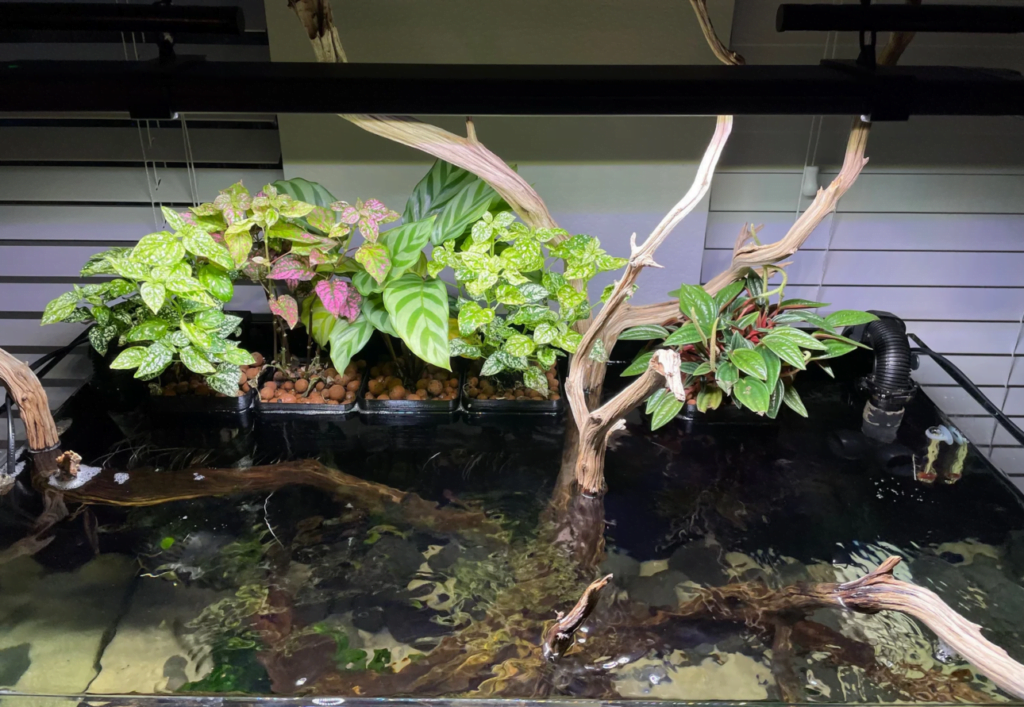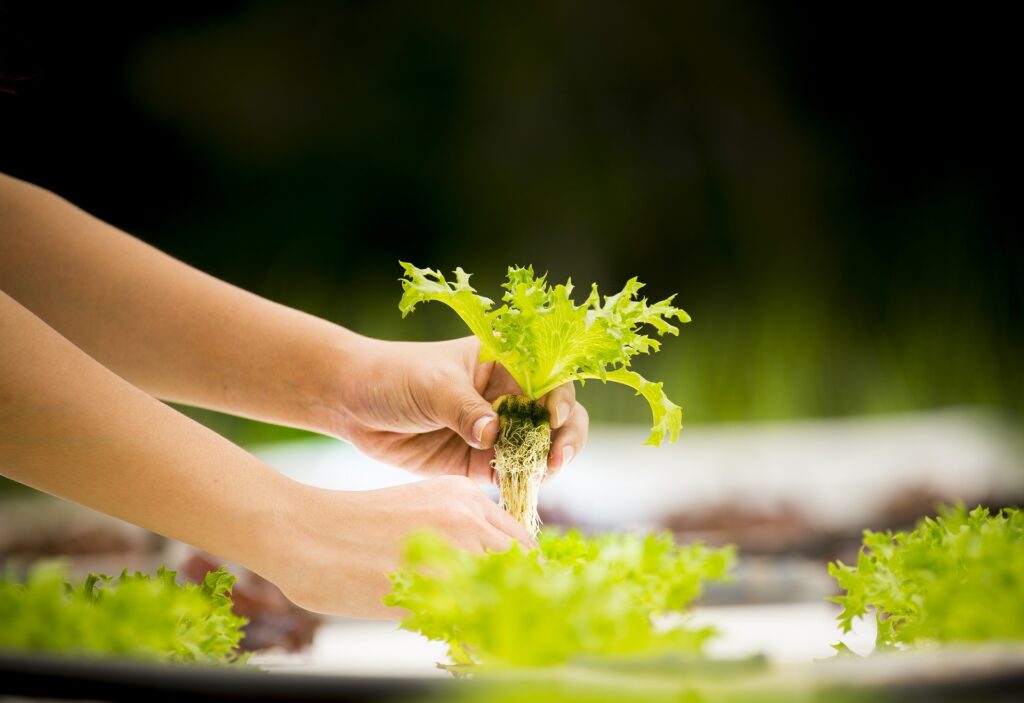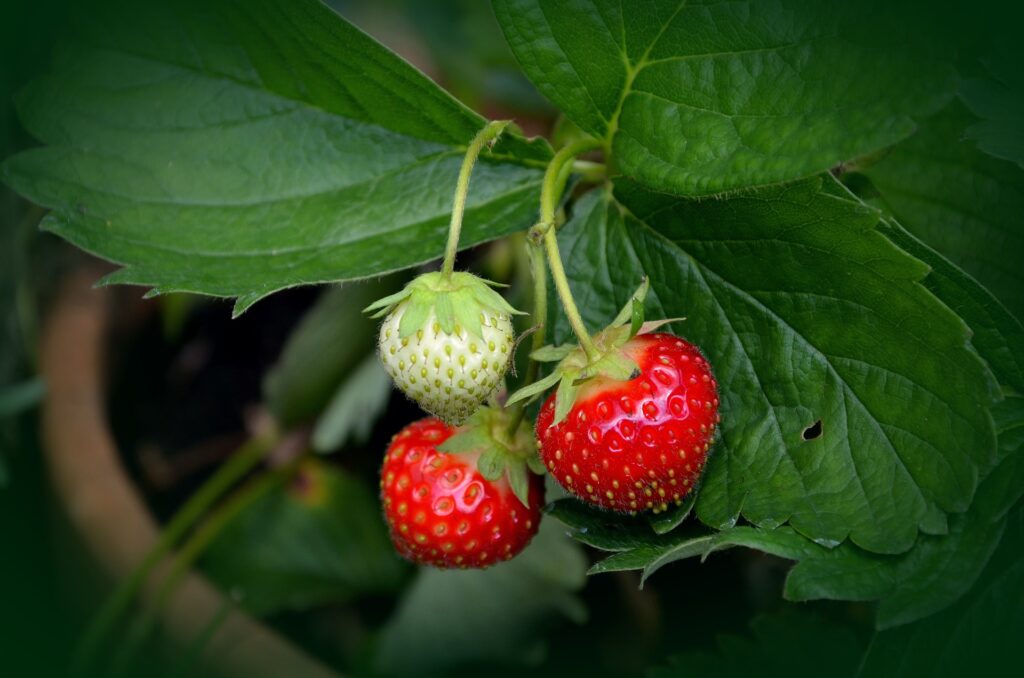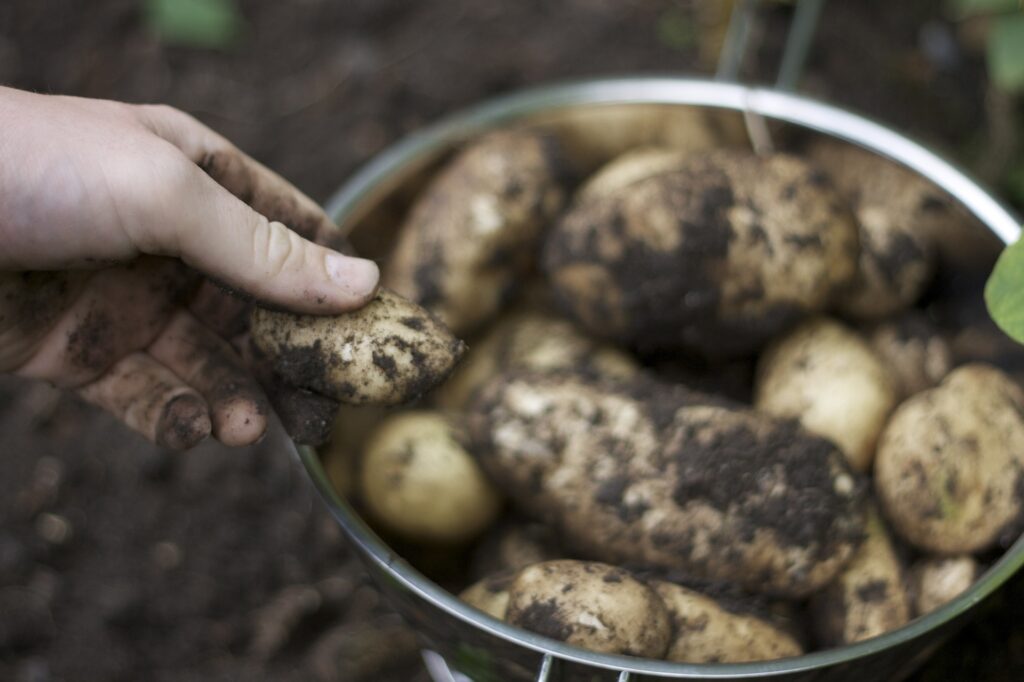Hydroponics has become a very popular method of growing fruits and vegetables at home. This is mostly due to the fact that it can be done in a smaller than usual space and the growth of the plants is accelerated due to them being able to more efficiently absorb nutrients.
BUT, with hydroponics, you need to continuously add nutrients into the water. This means it’s not a truly self-sufficient system, however, you can do something similar by using hydroponic growing methods with fish – this is called aquaponics and while similar, there are some key differences.
What Is aquaponics?
Aquaponics is a method of producing food which pairs hydroponics with aquaculture. You may be surprised to learn that aquaponics is in fact, not a new concept. Historically, similar methods of food production were used by the Aztecs and in China as far back as the 13th century.
While modern methods are a bit more refined, the core principals of aquaponics remain the same. Plants are still grown in a nutrient rich water base as opposed to soil, and you can expect the same accelerated growth and efficient use of nutrients and water as with hydroponics.
Aquaponics or Hydroponics – Which Should You Choose?
Hydroponics, when compared to aquaponics, is definitely easier to tackle for a beginner. While aquaponics has a lot of benefits, including the ability to grow and harvest your own fish for food, it also has many downsides. Fish can be very sensitive to changes in their water, and that means carefully watching and testing it to keep them alive.
This problem compounds the more fish you have in your system, and people interested in aquaponics are typically trying to produce as many pounds of food as they can in as little space as possible, which leads to over stocking.
While tight stocking in an aquaponics system can be managed if you are attentive with your monitoring, it can also be a nightmare if you don’t yet know what you’re doing.
However, before you get too overwhelmed, the basic concept of aquaponics can be more easily illustrated and explored simply by use of… fish tanks!
Hydroponics With Fish Tanks (Small-scale Aquaponics)
If you’ve ever seen those “beta bowls” for sale in your local big box store with the plants in them, this is a very basic example of aquaponics. While you won’t be able to feed your family out of a fish tank, you might be able to practice growing a couple of small kitchen herbs to see how the process works.

In this simple aquaponics aquarium setup, the plants are suspended just within the water level. The fish in the tank produce waste water which contains ammonia. If you’ve ever kept fish before, you’ll know that this waste builds up and if the water is not filtered or changed, it will eventually kill the fish.
However, the plants turn this waste into valuable nutrients which they then absorb to feed themselves. Clean water is then returned to the tank for the benefit of the fish.
This is aquaponics on a very basic level, and it’s a good way to get your feet wet or to teach your kids about nature’s amazing symbiotic relationships, but there’s a LOT more to it if you want to get into a full-scale aquaponics setup.
Do I Need A Filter To Use Aquaponics?
Yes, you will need a filter. While the plants do help to clean the water, they can’t filter solids. Your plants DO need the nutrients this waste provides, but bacteria is required to break down that solid waste into those nutrients.
The bacteria live throughout your system in the grow media, plant roots, walls of the tank, and other areas. They work to convert ammonia into nitrates and make them usable by the plants.
A solids filter creates a barrier between your plants and the unprocessed waste. The pump also keeps the solids from congregating in the bottom and mucking everything up.
But, what about those Beta tanks, you might say? The truth is, you are acting as the real filter in those setups. The water in a small bowl must be changed constantly and you are dumping it to keep toxins from building up in the tank.
The plant growing on top, while pretty, will not save your fish alone.
Most Popular Types Of Aquaponic Systems
Raft System
The raft system is one of the most simple kinds of aquaponics setups. It utilizes large foam floating rafts and net cups to suspend plants directly above the water’s surface. This method is widely utilized in commercial grow operations because it offers large production capabilities and efficiency.
However, the downside to this system is that many plants simply don’t grow well in a raft system. Light, leafy plants like lettuce are great, but root vegetables like carrots simply won’t grow in this system.
Media Based (Flood and Drain)
The flood and drain method is popular with home aquaponics users because it’s both simple and flexible in terms of what kinds of foods you can grow in it. This setup can be as easy or as complicated as you want to make it, but here’s the gist of it.
You start out with a “grow bed” which is filled with clay pellets. Vegetables are planted directly into the pellets, and then waste water from the tank is pumped up into the grow bed.
It’s a great system to utilize, and the only real downside is that it’s hard to scale. This makes it a problem for commercial operations, but not really a concern for self-sufficiency minded growers.
Nutrient Film Technique
This method uses pipes which transport the waste water. These pipes have the plants directly in them and the water simply washes over the roots and grow media.
Unlike the “flood and drain” method, it’s easier to scale production with NFTs. It’s also a popular choice when space is at a premium. This is because you build your aquaponics NFT tower up and up, utilizing vertical space in your greenhouse which would not be available to other methods.
Downsides to the NFT method include the fact that small pipes could end up blocked by aggressively growing roots, and that you can only grow plants with shallow root systems.
In closing, there are multiple ways to do aquaponics, and while the core principal is simple, there are a lot of working parts that make it happen. So, while I would, of course, encourage you to give it a try, it may be best to test it out with a smaller, more manageable system before you dive into a full-scale operation.
This will give you the opportunity to learn what needs to be done to keep your fish healthy, and work out any bugs in your design which may not have been accounted for before you spend a lot of money on a system.

Bob learned about farming from his grand dad. So, the decision to leave the city and start homesteading was not a difficult transition. He now lives with his wife and two kids on their 30 acre property in Ohio.



